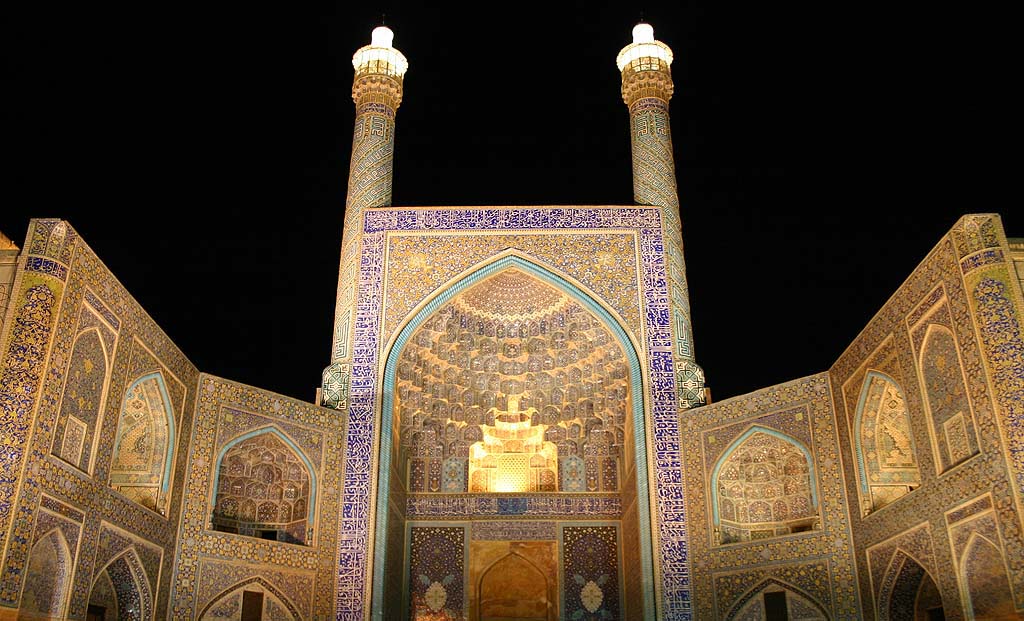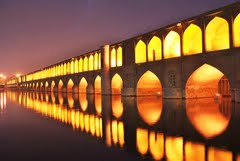|
 Isfahan Tour Isfahan Tour
Geographical Position, Isfahan
The province of Isfahan covers an area of approximately 107,027 square kilometers and is situated in the center of Iran. To its north, stand the Markazi (Central) Province and the provinces of Qom and Semnan. In the south, it is within the limits of the provinces of Fars, Kohkiluyeh and Booyer Ahmad. Eastwards, it is in the neighborhood of the provinces of Khorassan and Yazd. Whereas, in the west it has common borders with the provinces of Lurestan and Chahar Mahal and Bakhtiyari
Climate, Isfahan
Isfahan province experiences a moderate and dry climate on the whole, ranging between 40.6° C (being the maximum on a hot summers day), and the minimum being 10.6° C on a cold day in the winter season. The average annual temperature has been recorded as 16.7° C. and the annual rainfall on an average has been reported as 116.9 millimeters. The city of Isfahan experiences an excellent climate, with four distinct seasons that are apparent.
History and Culture, Isfahan
Historians have come to record Isfahan as a defense and military base. The security and protection of which was guaranteed by the increase of the number of castles, thereby, promoting the protection of the residents of the cities. These historical castles are Atashgah, Sarooyieh, Tabarok, Kohan Dej, Gard Dej etc. to name a few.
The great Shah Abbas I unified Persia, and with it created the grandeur of Isfahan. It even got the nickname Nesf-e-Jahan, meaning Half the World; to see Isfahan was to see half the world and no one leaves Isfahan without having marvelled at its architectural masterpieces. The highlights are Imam Square, with the mighty Imam Mosque, and the bridges crossing the Zayandeh Rud river.
Imam Square in Isfahan is one of the worlds largest squares, and also ranks among the most beautiful. One can easily spend several days just exploring the square, as well as the two mosques, the palace and the bazaar surrounding the square.

Isfahan: Bridge of 33 Arches
Like many other of the great monuments of Isfahan, the Si-o-Seh Pol (meaning Bridge of 33 Arches) was built under the great Shah Abbas I. Under his rule, from 1587-1629, the Persian empire became one of the most powerful in the world. Abbas was the one who moved the capital from Qazvin to Isfahan, and changing the face of the new capital into becoming one of the most beautiful cities in the world. The Si-o-Seh Pol was built between 1599 and 1602.
|





